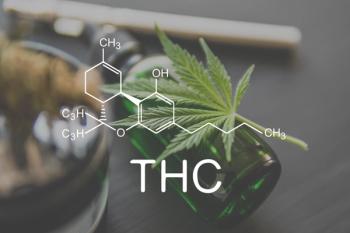
Study Highlights Role of Administration Modes in THC Exposure
The study tested the effects of real-world cannabis products categorized by four modes of administration: dabbing, vaping, bong-like, or joint-like products.
A recently published study examined how mode of cannabis ingestion affected plasma levels in users. Noting that current research commonly uses lower-potency research-grade cannabis in studies, researchers explained in the study’s abstract the importance of analyzing the effects of commonly used modes of administration – which were categorized as dabbing, vaping, bong-like, or joint-like – of products from legal markets. This is particularly important with expanding access to medical and recreation cannabis, they also state. The exploratory
The first analysis in the study, conducted by Colorado University, Boulder, evaluated plasma tetrahydrocannabinol (THC) concentrations as well as subjective perceptions of impairment. Participants were between 21 and 70 years of age and reported using cannabis at least four times in the past month. They were randomly assigned to a potency condition based on their preferred method of administration. The highest level of THC potency for this study was 24% THC for flower cannabis, or 90% THC for concentrates. Blood samples were collected afterwards to determine plasma cannabinoid levels.
The second part of the study, conducted by Colorado University, Anschutz, involved participants between the ages of 25 and 55 who reported using cannabis at least twice in the past month. After an 8-hour period of abstinence, the participants administered cannabis using their preferred modes of administration. For flower products, the THC concentrations ranged from 15-33% and for concentrates it was 60-90%. Blood samples were collected to determine plasma cannabinoid levels.
Overall, the plasma THC levels and subjective perceptions of effects were significantly different based on the route of administration. One highlighted result was that dabbing was associated with a higher plasma THC concentration, which suggests greater THC exposure, the researchers explained, though greater subjective effects were not reported, suggesting possible tolerance. Additionally, “dabbing and vaping exhibited more rapid reductions in levels of subjective intoxication over time, suggesting that higher levels of intoxication may not be sustained for these modes” (1). Increased use – resulting in increased use overall – of these modes to sustain a desired level of intoxication could be a risk for harmful cannabis use, they added.
Limitations to the study included a lack of generalizability of the results, the possibility of THC tolerance in the participants, and the lack of analysis of specific characteristics of products used by the participants.
The study demonstrated the importance of studying all modes of cannabis administration, the researchers stated. “In conclusion, the present study provides novel data to demonstrate that modes of administration likely play a role in THC exposure and experienced drug effects of cannabis reported by individuals who consume cannabis regularly using commercially available cannabis products,” the researchers stated in the conclusion. “Future research is needed to better characterize and account for modes of cannabis administration to inform safe uses as mode or route patterns quickly change over time among individuals using legal market cannabis products.”
Reference
- Chen, MY.; Brooks-Russell, A.; Bryan, AD.; Bidwell, LC. Mode matters: exploring how modes of cannabis administration affect THC plasma concentrations and subjective effects. J Cannabis Res, 2025. 7(28). DOI:
10.1186/s42238-025-00282-y
Newsletter
Unlock the latest breakthroughs in cannabis science—subscribe now to get expert insights, research, and industry updates delivered to your inbox.





